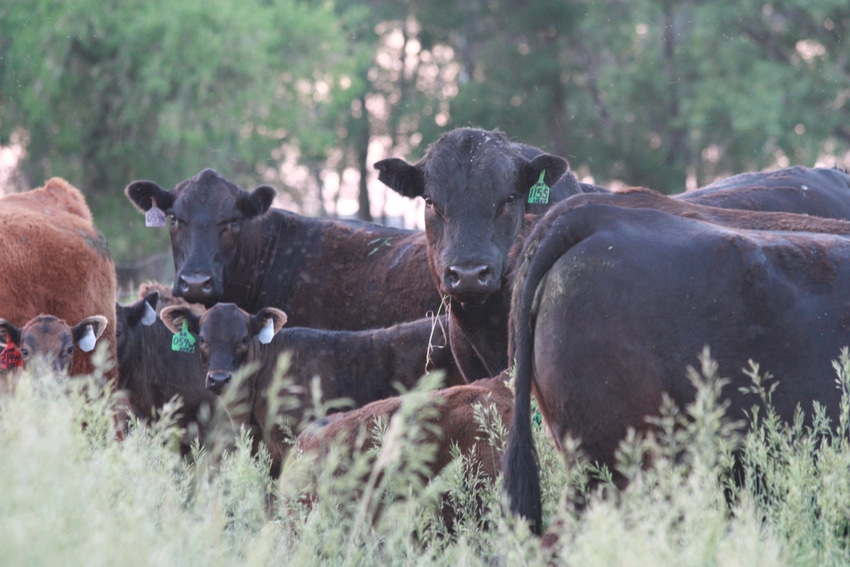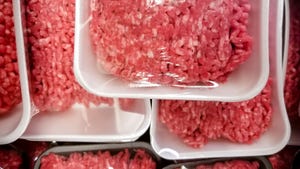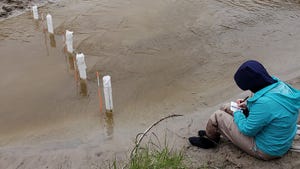3 key principles for summer grazing management
June 30, 2016

As June draws to a close, we’ll soon be entering the traditionally driest, hottest days of summer. With the July heat, summer pastures can suffer; however, there are a few critical management practices that can help producers extend the grazing season and promote plant growth, even during these hot and dry days.
Rory Lewandowski, Ohio State University (OSU) Extension educator, shared three key management principles in a recent OSU Beef Cattle Letter. Here are his thoughts on keeping pastures productive during the hot summer months:
1. Take half, leave half
“The take half, leave half principle must be followed during the summer months,” writes Lewandowski. “The leaf area that remains after a grazing pass provides a photosynthetic base for plant regrowth, shades the soil to keep the soil temperature cooler, and it helps to reduce soil moisture loss.
“In addition, research has shown that leaving half of the leaf area on the plant produces a minimal impact upon the plant root system, enabling that plant to continue to absorb nutrients and moisture and recover quicker. Taking off 60% or more of the plant leaf area will cause a significant decrease in the plant root system that will slow down and impede the regrowth of the plant. Do not cheat on this principle during hot, dry spells.”
2. Provide a rest period
“The second principle that must be adhered to is to provide a rest period that is sufficient to allow plants to grow back to a practical grazing height,” says Lewandowski. “Obviously, the two principles work hand in hand. The height at which grazing should begin is somewhere in the 8 to 10 inch range for grasses such as orchardgrass, fescue and festuloliums. For bluegrass and perennial ryegrass pastures, 6-8 inches may be used.
“In practice, this means that grazing rotations must slow down during hot, dry periods because grass growth and recovery is slower as compared to spring conditions. When pastures are growing fast, rotate fast. When pastures are growing slowly, rotate slowly. Unfortunately, it is easy to do the opposite and I have seen a number of pasture managers get caught in faster rotations during the summer with the end result that pastures become overgrazed leading to even slower recovery and less pasture production.”
So what’s the best way to increase grazing days on each paddock? Lewandowski says it’s important to have a sufficient number of pasture paddocks. He offers a formula to figure out how to increase the number of days before rotating from one pasture to another.
3. A formula to determine the number of paddocks needed
“The number of paddocks needed can be determined by this formula: Days of rest needed divided by days of grazing + 1,” he says. “For example, let’s say that in the spring of the year, it takes 15 days for grass to regrow from 4 inches back to 8 to 10 inches in height. If my livestock stay in each paddock for 5 days, I need 15/5 =3+1 or 4 paddocks.
“Now let’s say that as it gets warmer and drier it takes 35 days for that same pasture to regrow to an 8-10 inch height after being grazed down to 4 inches. I now need 35/5= 7+1 or 8 paddocks to provide enough rest period. If I have fewer paddocks I am either going to graze down the preceding paddock below 4 inches while waiting for the next paddock to regrow to the 8 to 10 inch height or I will enter the next paddock at a lower height and have less forage available.”
While we can’t control how hot or dry July gets, we can strategically manage the grass we have to extend the grazing season into the fall. Consider these tips to help keep summer paddocks productive and growing.
The opinions of Amanda Radke are not necessarily those of beefmagazine.com or Penton Agriculture.
You might also like:
9 new pickups for the ranch in 2016
Use cow-pie-ology to monitor your herds nutritional status
70 photos of hardworking beef producers
5 must-do steps for fly control on cattle
Here's when you should castrate beef valves
You May Also Like



